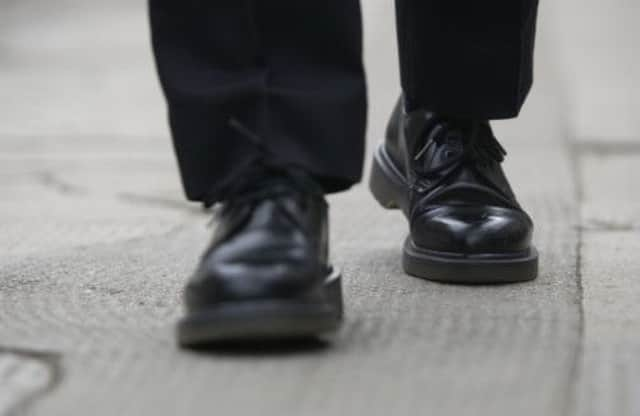Figures reveal revolution in policing methods


And a new analysis of crime figures has revealed that in the 1950s Scottish police spent more time investigating abortion, concealed pregnancy and bigamy than rape.
Scotland on Sunday studied official data from 1955 up to last year for evidence of how crime has changed over the past seven decades. The study reveals that in 1955 there were five reports of procuring an abortion and five of concealing a pregnancy. Four people were prosecuted for those offences.
Advertisement
Hide AdAdvertisement
Hide AdThere were only eight people prosecuted for rape and just 21 reports of the crime in 1955, compared with 1,037 rapes and attempted rapes last year. In 1955, there were twice as many reports of both incest and bigamy as there were of rape.
Lily Greenan, manager of Scottish Women’s Aid, said the figures reflect a major change in attitudes towards violence against women.
She said: “I’ve no idea who those women would have been, but I suspect they reported it because they had been so badly injured that someone else found out. It was so shameful that people did not talk about it.
“I’ve supported women in their 70s and 80s who never told a soul because in those days women were automatically deemed to be responsible.”
However, she added: “There’s been an enormous shift in the general position women hold in society, but we still have a situation where women are sometimes held responsible for their own rape.”
Graeme Pearson MSP, Scottish Labour’s justice spokesman and a former assistant chief constable of Strathclyde, said there had been a major change in attitudes since he began his police career in 1970.
“It was the view then that police should not interfere in family life,” he said. “Once you took the heat out of an incident it was time to back out.
“What changed was an increase in bringing together of knowledge and databases that showed that a substantial amount of time was spent on these incidents, and they were serious crimes such as serious assault, murder and attempted murder.
Advertisement
Hide AdAdvertisement
Hide Ad“People like me were noticing that more than 50 per cent of homicides were committed in a domestic environment, where partners were the victim and the accused.”
The most common crime against a person reported to police in 1955 was lewd and libidinous practices towards children, with 1,012 incidents. Three-quarters of those cases involved two or more offenders, but just 335 people were prosecuted within the year.
After assaults, the third most common crime against a person also involved children – 291 report of cruel and unnatural treatment. This covered everything from abuse and neglect to allowing children to be used for begging, and was also most successfully investigated by police, with 301 people prosecuted.
Crime rose sharply from the 1950s to the turn of the century but has fallen in recent years, although changes to recording techniques over time make comparisons unreliable.
However, one crime that has fallen significantly and is now at lower than 1950s levels is housebreaking.
In 1955, there were just over 25,000 reports of housebreaking, just below theft as the second most common crime.
By 1965, all crime and offending had almost doubled, driven in part by housebreaking reports soaring to 63,000, topping the crime charts.
It remained the most common crime throughout the 1970s and 1980s, reaching 108,520 in 1983.
Advertisement
Hide AdAdvertisement
Hide AdBut since then improved security and advances in policing, such as forensic investigation, have led to a sharp fall.
There were more than 800,000 crimes and offences last year – four times the 1955 level – but housebreaking accounted for just 21,000 of them.
Twitter: @Gareth_Rose